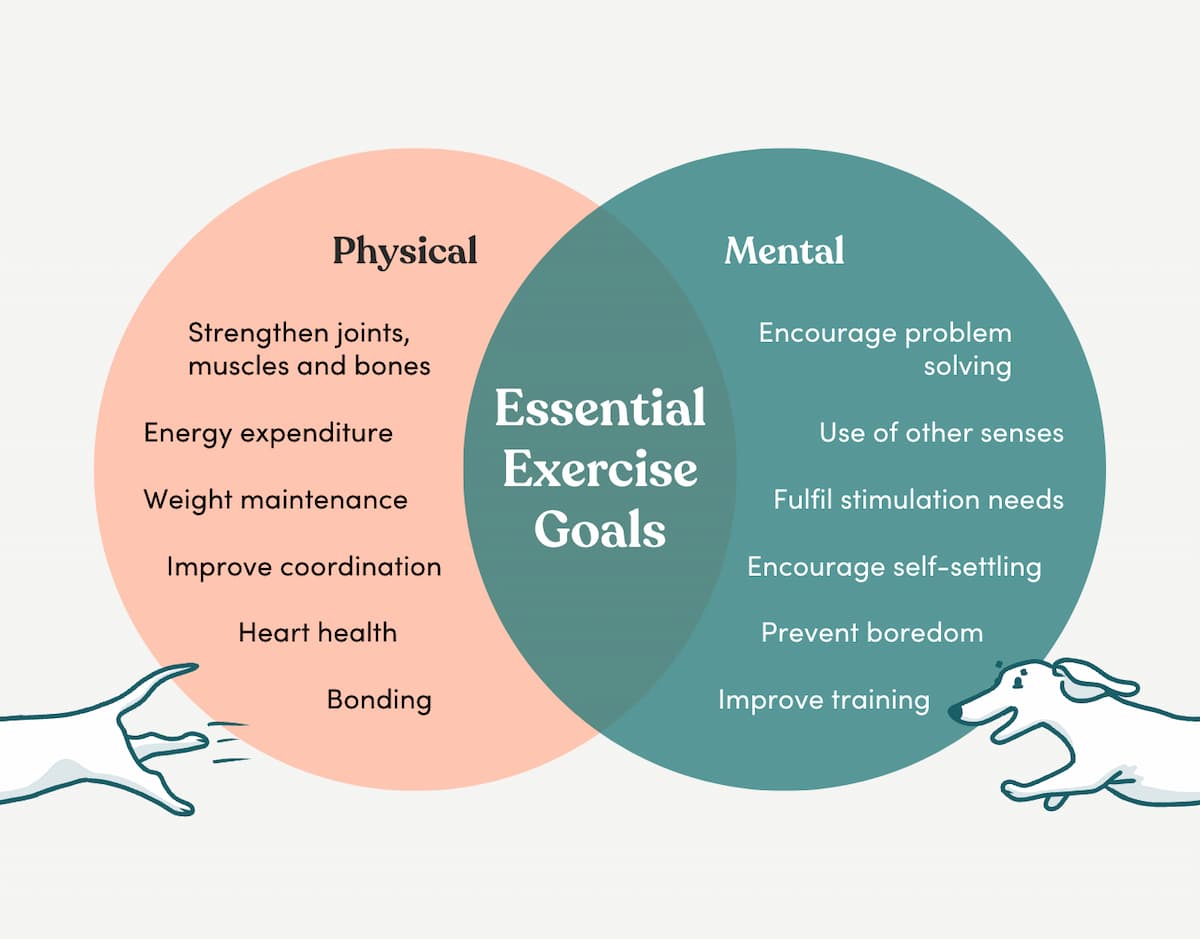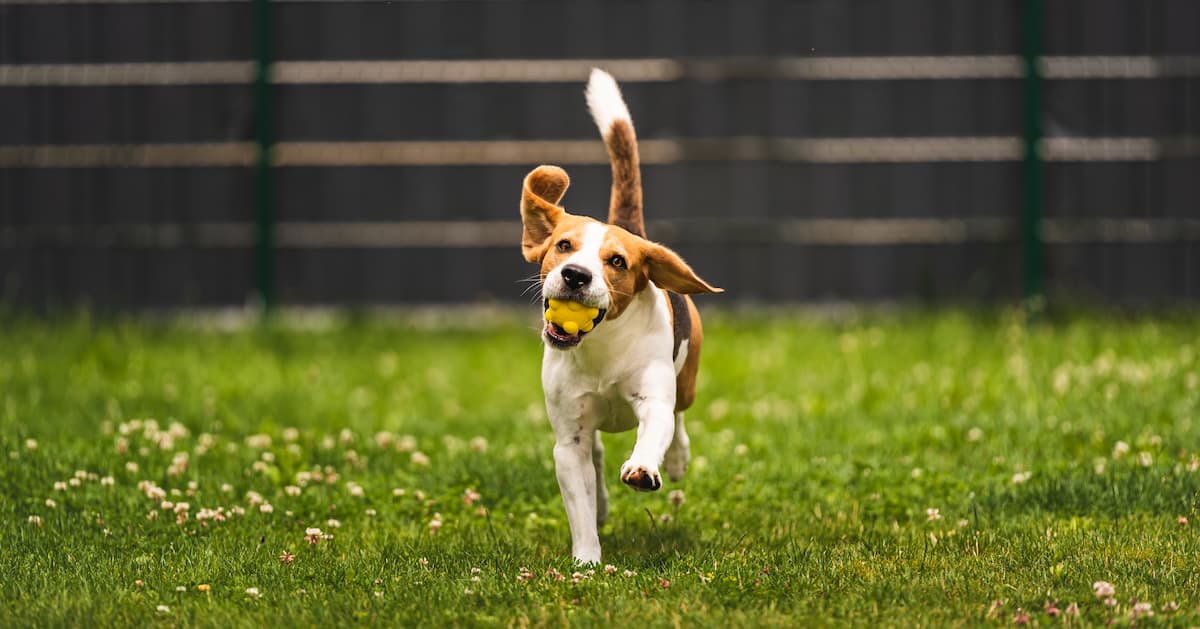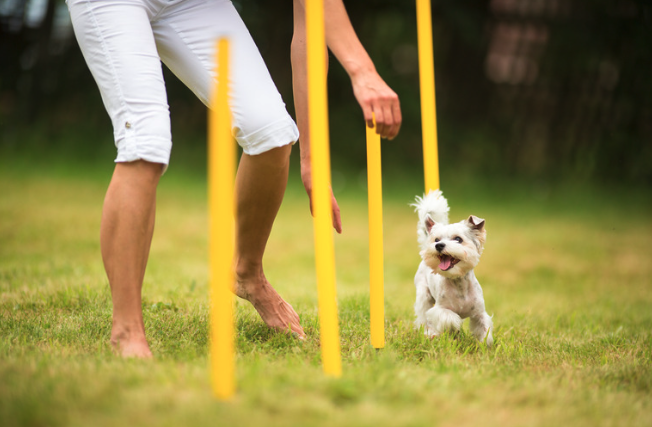Dogs come in all different shapes and sizes, and as varied as they can be, so are their mental and physical needs.
Common advice to walk your dog at least once a day is a great start, however it doesn’t provide the complete and balanced mental stimulation that dogs need.
Combining mental and physical stimulation for dogs
Mental and physical exercise for dogs can often crossover and it’s great if you can meet both needs in any given activity. The key to a healthy, happy dog is having a holistic approach to their well-being to ensure all their boxes are being ticked. Dog mental health has had some light shed on the gravity of it from COVID, with Australia’s pet population experiencing more separation anxiety than ever due to lockdowns. If we’re not mentally stimulating our dogs, they’re at risk of developing anxiety, depression, OCD and displaying unwanted behaviour as a result.
 What mental stimulation does your dog need?
What mental stimulation does your dog need?
Every dog has different mental stimulation needs, and a good place to start with determining what they need is their breed. Certain breeds are born with characteristics in their DNA like herding, scent hounds or even companionship. If they don’t have an appropriate opportunity to satisfy these desires they’ll attempt to fulfil themselves and this can quickly become problematic.
Physical exercise is easy to achieve – walking, running, swimming, and playing are all simple to get your dog to join in on. These are all activities you can incorporate into your daily routine, and something you know you’re signing up for when you get a dog. Physical exercise is essential to maintain their health. Without it, they’re at risk of obesity, heart complications, diabetes, joint issues and more.
 Mental stimulation can be more difficult depending on the dog, knowing what they need, encouraging them to engage, teaching them how to do it, knowing what their quota is and having access to the tools to do it.
Mental stimulation can be more difficult depending on the dog, knowing what they need, encouraging them to engage, teaching them how to do it, knowing what their quota is and having access to the tools to do it.
For example, living in the suburbs with a herding dog like a Kelpie means fulfilling their need to work, herd animals, and exert excess amounts of energy can be extremely hard to do. A working breed dog can take 2-3 years to be fully trained to work with livestock, and that’s with year-round training so expecting them to be happy and settled in a small yard or apartment with no job to do isn’t going to happen overnight.
On the other hand, some breeds were bred for companionship and their mental requirements are tied to being with people where an ideal activity could be visiting hospitals or schools as a therapy dog.
The good news is… with the popularity of pet ownership in Australia, there are continually new developments, products, services and ideas to help our dogs. There are plenty of options to incorporate into your daily life to mentally stimulate them. Snuffle mats, lick mats, food puzzles, and interactive games are a great place to start for beginners. As you and your pet progress, you can work your way up to more difficult tasks. These all aim to teach problem-solving and encourage the use of other senses like scent and feel.
Ideas for mental stimulation for dogs
Training is also a great source of mental stimulation, diving into more tricks, training games and even agility will get your pooch thinking and help achieve a sense of accomplishment. Simple tricks to start with (after basic manners) are: shake, spin, speak, stand, play dead…the list is never-ending! Training is also a fantastic bonding experience, so it will strengthen your relationship. Training games are a great way to increase engagement, leave it, find it, hide and seek, or even learn a ‘dance’ routine together are a great way to help your dog achieve that sense of accomplishment and fulfil their desire to work. Another option that can combine physical and mental stimulation is agility, which provides an opportunity to explore different surfaces & heights, and works on balance, concentration and memory if doing courses.
Mental stimulation needs in dogs, according to age
The level of mental stimulation a dog needs fluctuates across their life, age and events will be the big two determining factors. For example, puppies are naturally very curious and explore so they provide a lot of mental stimulation themselves. Where needed, learning how to tire out your puppy can also help to provide extra stimulation to keep their energy at bay.
However, older dogs who might have arthritis or aren’t as active will need more options provided to them to achieve that stimulation. Events related to health will be very influential, for example, a dog recovering from surgery or illness who might need to have restrictions on physical exercise will require a lot of mental stimulation to keep them occupied and avoid restlessness and frustration.
Both mental and physical exercise are equally as important, satisfying each dog’s specific needs is about treating them as an individual and catering their exercise and activities to their needs and desires. It’s important to not limit dogs either, just because they were bred for one thing or enjoy one thing this shouldn’t limit them, provide a variety of outlets and utilise what works for them.
Looking for someone to help provide a balance of physical and mental stimulation for your dog?
Enlist the help of a Mad Paws Pet Sitter near you >

